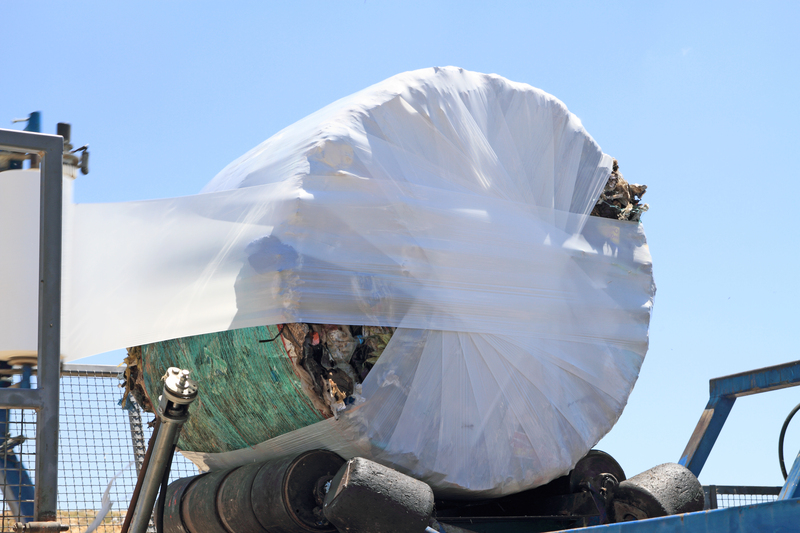Helpful Reminders for Disposing of PPE Waste Responsibly
The proper disposal of Personal Protective Equipment (PPE) waste is crucial for environmental safety and public health. With the widespread use of PPE like masks, gloves, and face shields, understanding how to manage disposal is more important than ever. If you're seeking guidance on responsible PPE waste disposal, this comprehensive guide will provide you with valuable reminders and easy-to-follow tips.

Why Is Proper PPE Waste Disposal Important?
Personal Protective Equipment (PPE) waste poses unique challenges. Most PPE is designed for single-use, leading to significant daily waste. Here are key reasons why responsible PPE waste disposal is vital:
- Environmental Protection: Improperly disposed PPE can end up in waterways and oceans, harming wildlife and polluting ecosystems.
- Public Health: Used PPE may carry germs, bacteria, or viruses. Improper handling exposes waste collectors and the general public to potential infections.
- Waste Management: PPE is not always suitable for recycling. Mixing it with general recyclables can contaminate the stream.
Being mindful of PPE disposal helps protect the planet and everyone living on it.
Types of PPE Waste & Their Environmental Impact
To dispose of PPE waste responsibly, it's essential to understand the types of PPE most commonly used:
- Face Masks: Surgical masks, N95 respirators, and cloth coverings have become ubiquitous. Disposable masks are typically made from plastics like polypropylene, which do not easily biodegrade.
- Gloves: Latex, nitrile, and vinyl gloves are single-use items. These can take decades to break down in landfills.
- Face Shields & Goggles: Often made from hard plastics, these may have reusable or disposable components.
- Protective Gowns & Aprons: Frequently made of non-woven fabrics and polymers, designed for sterility and single-use.
- Shoe Covers: Disposable covers made from plastic, used in medical settings.
The major environmental concern with PPE waste is its plastic content. When not disposed of correctly, these items can break down into microplastics, threatening marine and terrestrial habitats. PPE litter is now a common sight in cities and beaches, underlining the urgency for proper disposal methods.
Best Practices for Disposing of PPE Waste Responsibly
1. Separate PPE Waste from Regular Trash
Always separate used PPE items from household or workplace recyclables and general garbage. Mixing PPE with recyclables can contaminate the recycling process, making the entire batch unusable.
2. Use Dedicated PPE Waste Bins
- At home or work, set up clearly labeled bins for PPE disposal.
- Use strong, leak-proof bags inside the bin to prevent accidental contact for waste handlers.
- If you're disposing PPE at a public facility, locate marked bins for PPE waste. Never leave used PPE in carts, on sidewalks, or in parking lots.
3. Never Recycle Single-Use PPE!
Single-use PPE like masks and gloves cannot be recycled through standard recycling programs. They can:
- Clog recycling machinery.
- Contaminate other recyclables, leading to their disposal in landfills.
- Expose recycling workers to potential health risks.
4. Safely Bag Used PPE Waste
When you remove used masks, gloves, or other PPE items:
- Place them into a strong plastic or biodegradable bag.
- Tie the bag securely to avoid leaks or accidental spillage.
- Wash hands thoroughly after handling PPE disposal bags.
5. Follow Local Guidelines for PPE Waste Disposal
Municipalities may have specific PPE waste disposal guidelines. Check your city or local health department's website. Some zones require double-bagging or separate collection for infectious waste.
6. Don't Flush PPE Down Toilets
Masks, gloves, and wipes should never be flushed. Flushing PPE causes severe plumbing blockages and contributes to pollution in water systems.
7. Use Reusable PPE When Appropriate
- Cloth masks can be washed and reused, reducing waste.
- Reusable face shields and goggles should be sanitized properly after use.
How to Dispose of PPE Responsibly in Different Settings
Home Environment
- Keep a separate trash bin for PPE in your entryway or mudroom.
- If anyone in your home is ill, double-bag their used PPE and label it clearly before placing it with general landfill waste.
- Teach children about the importance of not touching the outside of used masks or gloves.
Workplace or Business Environment
- Provide accessible PPE disposal bins at key locations: entrances, break rooms, restrooms, and near PPE distribution stations.
- Train staff on PPE waste protocols. Frequent reminders through posters or digital communications can help.
- Arrange for frequent collection and proper disposal, and maintain hygiene by disinfecting bins regularly.
Healthcare Facilities
- PPE waste from healthcare settings should follow clinical or medical waste procedures.
- Yellow bags or bins are usually designated for infectious or biohazardous waste, including used PPE.
- Staff must adhere to OSHA and local health authority regulations for PPE disposal.
Public Places
- Use provided PPE waste receptacles.
- If appropriate bins are not available, carry a resealable bag to transport your PPE waste home.
The Role of Reusable PPE in Reducing Waste
The adoption of reusable PPE options is among the best ways to reduce waste. Here's how you can integrate reusable PPE safely:
- Cloth Masks: Use multi-layered, fitted cloth masks and wash them after every use.
- Washable Gowns & Face Shields: Opt for washable or disinfectable items when possible.
- Proper Cleaning: Ensure consistent standards for sanitizing reusable PPE to maintain hygiene and effectiveness.
Remember: Not all situations allow for reusable PPE. In highly infectious environments, disposable PPE is necessary for safety.
Innovative Solutions for PPE Waste Management
With the surge in PPE waste generated globally, new and innovative solutions are emerging:
- PPE Take-back Programs: Some manufacturers and retailers offer return programs for used PPE, ensuring controlled incineration or specialized recycling.
- PPE-Specific Recycling: Specialized recycling companies now process plastic PPE into usable materials, like construction blocks or paving.
- Biodegradable PPE: Research is underway to develop biodegradable masks and gloves that break down more safely in the environment.
Myths About PPE Waste Disposal
Myth 1: All PPE can go in the recycling bin.
Fact: Standard municipal recycling cannot process most PPE, especially if contaminated, due to health and material limitations.
Myth 2: Masks and gloves will biodegrade quickly.
Fact: Most disposable PPE contains plastics that persist for decades unless specially processed.
Myth 3: Burning PPE at home is a safe disposal method.
Fact: Burning plastic PPE releases toxic fumes. Only specialized facilities can incinerate PPE safely.
What Not To Do When Disposing of PPE Waste
- Do not litter: Leaving used PPE in parking lots, parks, or streets puts others at risk and harms wildlife.
- Do not flush PPE: As previously mentioned, this is a major source of water pollution and blockages.
- Do not mix with recyclables: Keep PPE out of recycling bins unless stated by local authorities.
Steps for PPE Waste Disposal at a Glance
- Remove PPE safely: Avoid touching the exterior.
- Bag the waste: Use a strong or biodegradable bag, tie securely.
- Use designated PPE disposal bins: At home, work, or public places.
- Wash your hands: Every time, after any contact with PPE waste.
- Follow local instructions: Each community or sector may have specific rules for PPE waste handling.
- Educate others: Share best practices with family, friends, and colleagues.
Raising Awareness About Responsible PPE Waste Disposal
Becoming an advocate for responsible PPE waste disposal doesn't have to be difficult. Here's how you can spread the word:
- Share your knowledge with friends, family, and social media followers.
- Encourage your workplace or local community to provide adequate disposal bins and clear signage.
- Collaborate with local environmental groups to organize awareness campaigns or clean-up events.
- Stay updated on the latest guidelines from health and environmental organizations.

Helpful Reminders for PPE Waste Disposal
- Always dispose of PPE in the correct bin. If unsure, consult local guidelines.
- Avoid touching the outside of used PPE; wash hands thoroughly after handling.
- Never recycle or flush single-use PPE.
- Consider reusable PPE when suitable, and clean regularly.
- Educate and remind others about PPE waste disposal in your community, school, or workplace.
- Report overflowing or missing PPE bins in public places to authorities for quicker action.
Conclusion: Making a Difference with Responsible PPE Waste Disposal
Proper PPE waste disposal is more than a personal responsibility; it's essential for global health and environmental sustainability. By following these helpful reminders for disposing of PPE waste responsibly, you take practical steps to protect yourself, your community, and the planet.
Let us all commit to these best practices for PPE waste management. Encourage those around you to do the same, and together we can minimize the environmental impact of PPE and make our surroundings safer and cleaner.
The next time you use a face mask, gloves, or other personal protective equipment, remember: your small action of proper disposal has a powerful impact on health, safety, and the environment. Stay informed, stay safe, and always dispose of PPE waste responsibly!